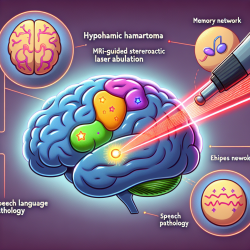Understanding Dyslexia: Early Identification is Key
Dyslexia, a common learning disability, affects approximately 5-10% of the population, impacting their ability to read, write, and spell. The study titled "A stitch in time…: Comparing late-identified, late-emerging and early-identified dyslexia" by de Bree et al. (2022) provides valuable insights into the importance of early identification and intervention for dyslexia.
Key Findings from the Study
The research categorizes dyslexia into three groups: early-identified, late-emerging, and late-identified. The study reveals that:
- Early-identified dyslexia (diagnosed in Grades 1-3) allows for timely intervention, which can significantly improve literacy outcomes.
- Late-emerging dyslexia involves children who initially perform well but later struggle, highlighting the need for continuous monitoring.
- Late-identified dyslexia, often due to instructional casualties, stresses the importance of comprehensive literacy assessments and teacher awareness.
Implications for Practitioners
For practitioners, these findings underscore the necessity of early and accurate identification of dyslexia. Here are some actionable steps:
- Implement Regular Screenings: Conduct regular literacy assessments from an early age to catch any emerging difficulties.
- Enhance Teacher Training: Equip educators with the knowledge to recognize early signs of dyslexia and understand its varied presentations.
- Utilize Data-Driven Interventions: Leverage data from assessments to tailor interventions that address specific literacy challenges.
- Foster Collaboration: Encourage collaboration between teachers, speech-language pathologists, and parents to create a supportive learning environment.
Encouraging Further Research
While this study provides significant insights, it also highlights the need for further research into effective identification and intervention strategies. Practitioners are encouraged to stay informed about the latest research developments and integrate evidence-based practices into their work.
By focusing on early identification and intervention, we can better support children with dyslexia, improving their literacy skills and overall educational outcomes. The study by de Bree et al. serves as a crucial reminder of the impact timely diagnosis can have on a child's academic journey.
To read the original research paper, please follow this link: A stitch in time…: Comparing late-identified, late-emerging and early-identified dyslexia.










